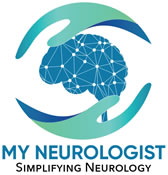Duchenne muscular dystrophy (DMD) is the most common type of muscular dystrophy.
What is the cause of DMD?
DMD is caused by an abnormal gene, which results in muscle injury or degeneration.
How is DMD inherited?
Abnormal gene of DMD is on chromosome X. As boys only have one X chromosome, they get affected if they have the abnormal gene. Girls on the other hand, have two X chromosomes; so, if they have the abnormal gene on one X chromosome, they carry the gene, but may not have the full-blown disease. There are rare cases of females having full blown DMD due to some more complex genetic reasons. Gene of DMD is well defined and can be tested. Also, there are variety of abnormalities of DMD gene, which may cause different severity of this disease.
What are symptoms of DMD?
It typically presents with a child born normal but having delayed motor milestones, or falling, or stumbling, or not able to get up and walk, due to weakness in leg muscles. Sometimes, there are difficulty speaking, or cognitive problems. The child may be in wheelchair before 13. Median age is 28, and usual cause of death is problems with heart and lungs.
How is DMD diagnosed?
It is diagnosed with:
. Clinical features
. Enzyme tests: High level of CK suggesting muscle damage without any reason.
. Genetic testing
. Muscle biopsy: Now not routinely done.
. EMG/NCS
. Heart and lung tests to r/o any complications
. Ultrasound and MRI of muscles: To study disease progression.
How is DMD treated?
. Corticosteroids.
. Kappa-B inhibitor: Vamorolone.
. Stop-codon readthrough: Ataluren.
. Exon skipping: Eteplirsen, Golodirsen, Viltolarsen, Casimersan.
. Gene therapy: Elevidys.
. Anti-fibrotic: Pamrevlumab.
. Muscle regenerators: Allogenic therapy, Follistatin.
. ACE inhibitors and beta-blockers for cardiac complications.
. Physical and occupational therapy.
. Surgery: To help correct contractures and spinal curvature.
What is Becker muscular dystrophy (BMD)?
Becker muscular dystrophy is like Duchenne type except that is milder and presents later, in teen years or early adulthood, instead of infancy or childhood.
Where can I find more information about DMD?


Leave a Reply
Your email is safe with us.
You must be logged in to post a comment.